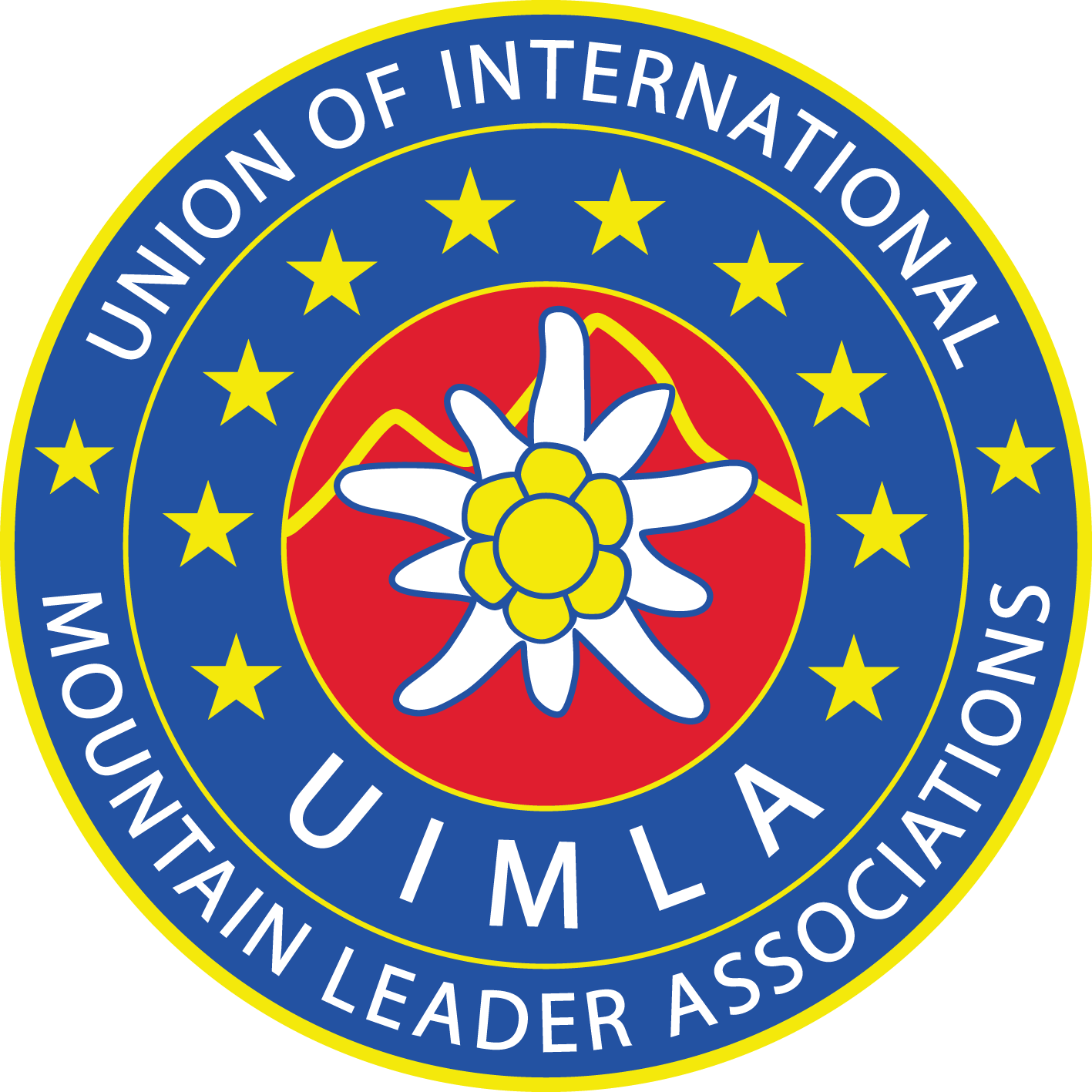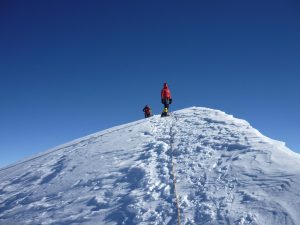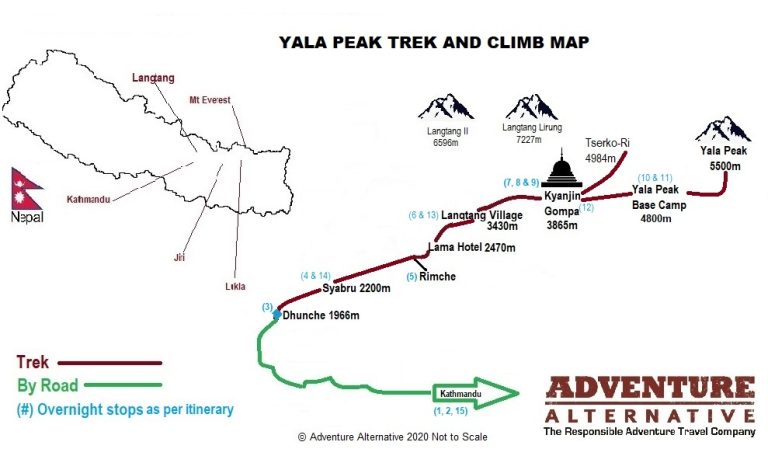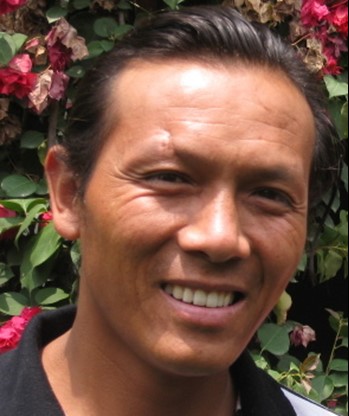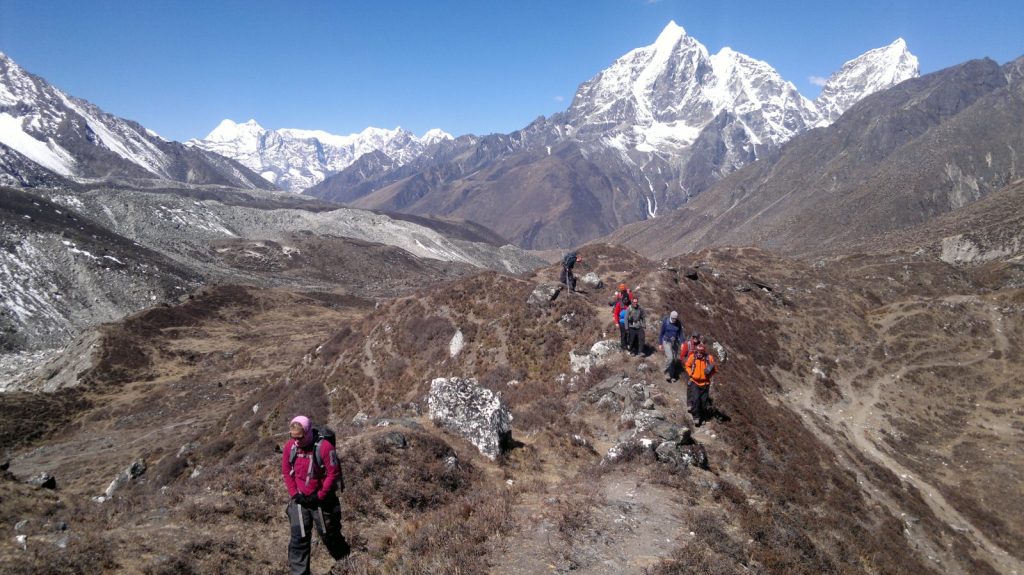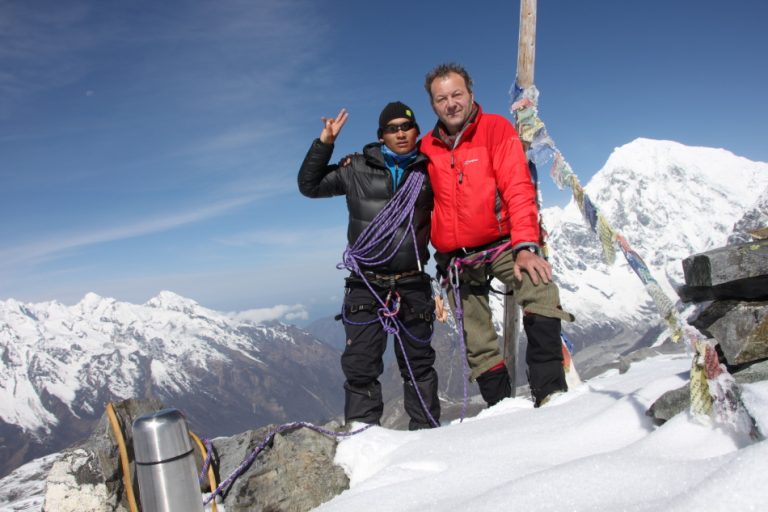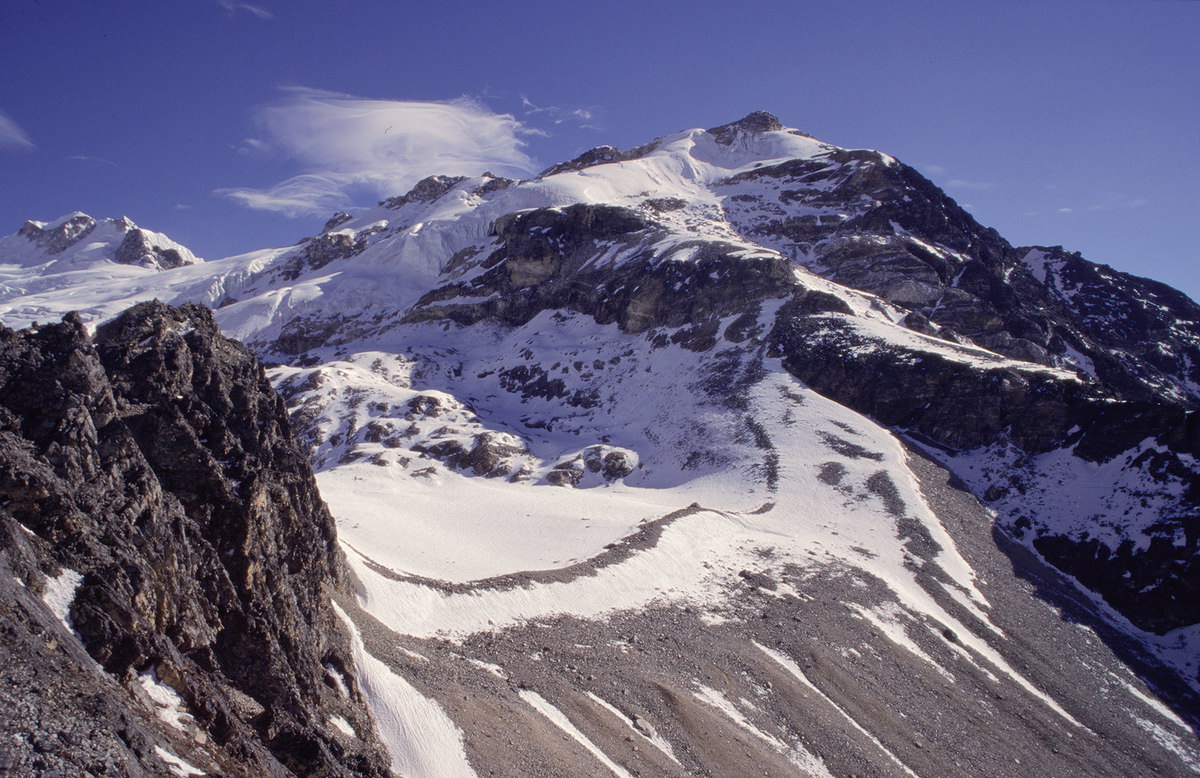
Climb Yala Peak, 5500m
This is a fantastic two week adventure trekking through the Langtang National Park in Nepal culminating in an ascent of the relatively non-technical 5500 metre high Yala Peak which close to the Tibetan border and north-east of Kyangin Gompa (3870m).
Overview
The mountain can be climbed in three days from the Gompa with using a high base camp (Yala Kharka) at 4800m and a spare weather day, and it provides a vantage point from where the 8013m peak of Shishapangma can be seen. Yala involves some scrambling on rock and the travelling on snow which can be soft or hard according to conditions. Crampons and a walking axe are necessary, as is a helmet in case of a fall or slip, and we also recommend a harness and sling in case the guide needs to help someone down.
This webpage provides a virtual 360 view from the top of Yala Peak with all the names and heights of the surrounding peaks. For an interactive 3D flythrough of the mountain and the Langtang Valley, click on this FatMap page. There’s also a nice video of the Langtang trek and Yala summit on this youtube page.
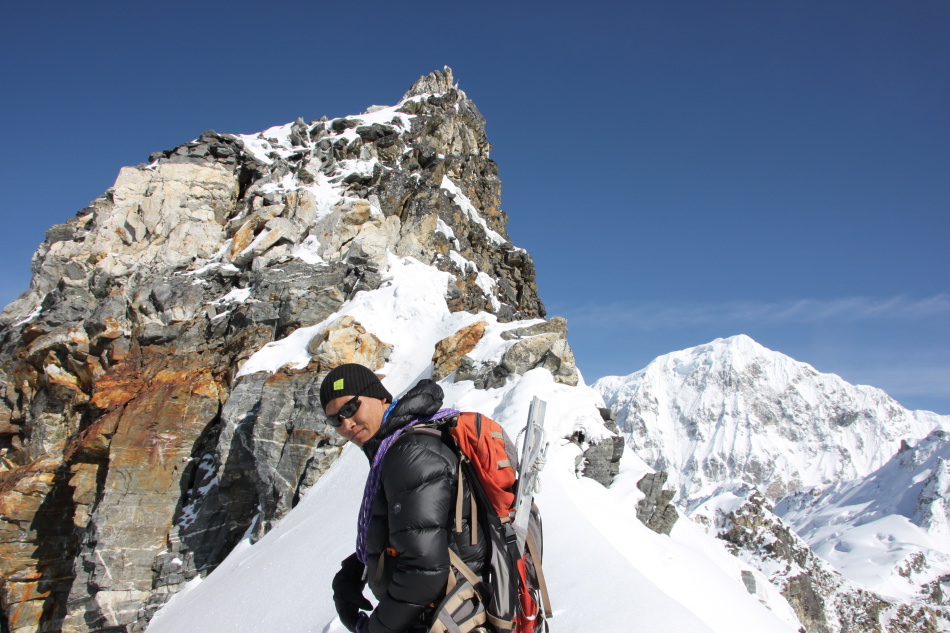
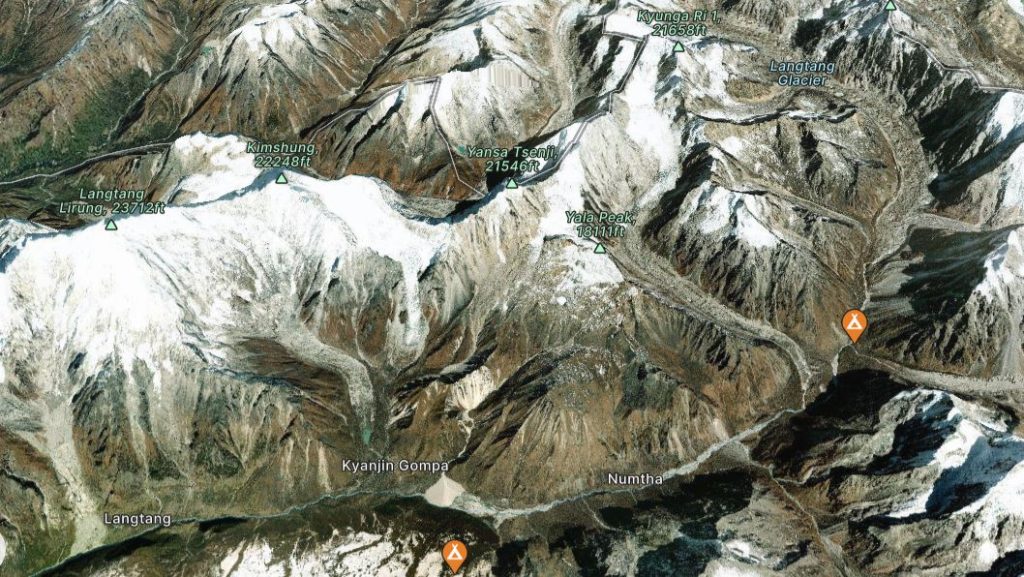
What Our Adventurers Think:
I only have good things to say about Adventure Alternative. Gavin, the owner, is very knowledgable and gets personally involved in the trips they’re selling. It’s a caring company — they care about their clients, their staff, and the communities in which they operate. The trek I went on was the best trip I’ve ever made. I could’ve been pushed further, but am happy they took it relatively easy on this as one of my earlier treks. Nice to see I’ve got more to give for future treks/climbs. The guides and porters were excellent, all from the same area, and so knew each other and Gavin. They were knowledgable, fast, strong and trustworthy. I will not hesitate to use Adventure Alternative again. They are good guys (and girls) and that is vital to me, and very personable. Encountered some other trekking companies, but they seemed really militant in comparison. Adventure Alternative is highly professional, but also relaxed and good humoured. When we finished our trek we were happy and relaxed, whereas participants from the other company seemed stressed and almost destroyed. I know which company I’d rather go with. Gavin has also set up a charity called Moving Mountains, helping the communities in which he operates. Now that’s really impressive and good hearted in my eyes. Just one more reason why I’d choose Adventure Alternative for any adventures I might go on.Will definitely use Adventure Alternative in the near future again.
Yala Peak Itinerary
Getting to Langtang is quite simple and does not involve any internal flights. It is a seven hour jeep journey from Kathmandu to Syabru Besi which is at the start of the Langtang Valley. From there is a pleasant acclimatisation trek up the valley and then a further hike to the base camp, and an early start to climb to the summit and get back down again safely in daylight hours.
- Arrival & Preparations in Kathmandu, drive to trek start (days 1-3)
- Trekking up the Langtang valley (days 4-8)
- Climb Yala Peak (days 9-11)
- Trek back down Langtang valley & drive to Kathmandu (days 12-15)
- Depart Kathmandu (day 16)
Note: you can also do a 3 day Yala Peak add-on to the Langtang Trek & Heritage Trail which incorporates a circular trail within the trek and is slightly longer at 18 days.
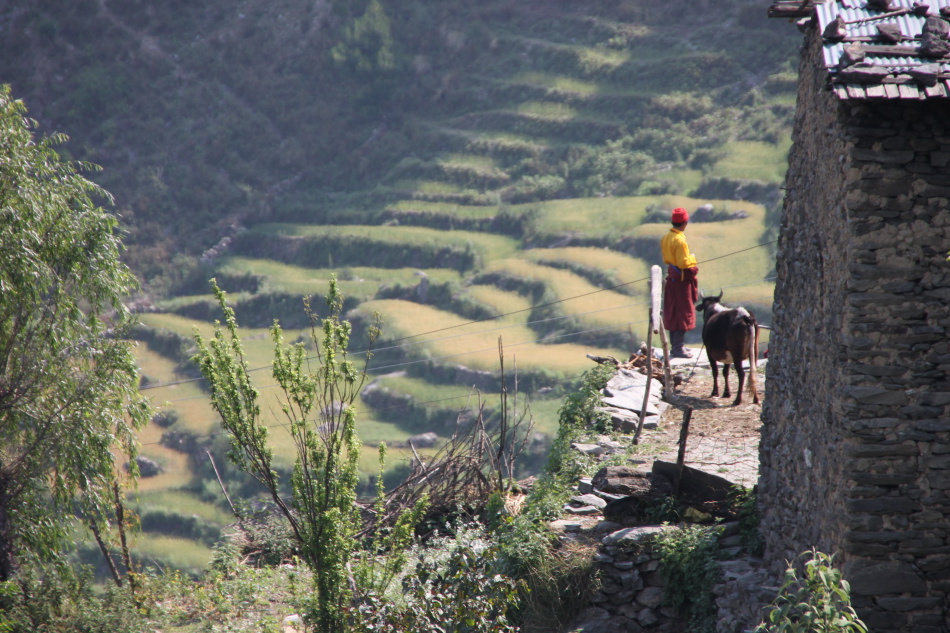
Arrive in to Kathmandu and transfer to hotel.
Meet our team, rest, relax, explore Kathmandu and have a trip briefing.
Drive from Kathmandu north to Dhunche (1966m) by 4WD which takes about eight hours, following scenic foothills and ridgeline vistas. The road beyond Trishuli Bazaar becomes a gravel route, sometimes blocked by landslide in the rainy season. Overnight in lodge.
Trek from Dhunche to Thulo Syabru (2221m) which takes about five and a half hours and onto to Thulo Syabru (6950ft, 2221m). The walk is leisurely through forests and terraced hill slopes, descending to a ridgeline that separates the Langtang Khola from the Trisuli River. Syabru is a beautiful village stretched out along the ridgeline. The sunset can be spectacular; brilliantly backlighting the houses perched on the ridgeline above. From here you can enjoy spectacular view of Lantang Lirung (7245m.) and the Tibetan Himal ranges. Overnight stay at lodge
Trek from Syabru for about five hours, descending along the ridge and dropping to the Ghopche Khola and then ascending evenly to Rimche (2400m) through bamboo forest where it is possible to catch sight of the red panda, monkey and black bear, although these animals are naturally secretive and shy.
Continue the ascent above the Langtang Khola which becomes steeper and leads to a log bridge and the lush meadows of Ghora Tabela beyond. Along the way there is a beautiful sight of Langtang Lirung (7246m), and the route opens up into a wide valley of yak pastures and scattered Tamang villages with water-driven mills and prayer wheels. After crossing a stream we reach Langtang village at a height of 3500 metres, which is the headquarters for the park and has traditional flat roved Tibetan style houses, small hotels and cultivated lands yielding buckwheat, potatoes, wheat, turnips and barley. Overnight at lodge.
The walk to Kyangjin takes about three hours and climbs gradually through small villages and yak pastures as the valley opens out further and the views become more extensive. After crossing several small streams and patches of moraine, the trail reaches the settlement at Kyangjin where there is a small monastery and a government-operated cheese factory. We should arrive at Kyangjin by lunch time allowing time to acclimatise and explore the area. It is a dramatic setting, with surrounding snow covered peaks. Overnight stay at lodge.
This is a day off for acclimatization and a proper rest, exploring interesting places like the monastery and the cheese factory. You can walk up the moraine and climb Kyangjin Ri at 4350m for views of the surrounding peaks.
Today we will ascend to Tserko-Ri which is just behind the village and will allow us to reach 4984m before dropping again to 3840m to overnight. A beautiful panoramic view of the snow-capped mountains of the Langtang range can be seen from here. After enjoying the views, we will descend back to Kyanjin Gumba. Overnight at the Lodge.
A six hour trek along lateral moraine to the high camp. The horse can make it this far if the ground conditions allow, depending on whether there is deep snow or not.n At Base Camp we’ll be camping overnight.
Our summit attempt generally takes 8 hours. The last 700 metres will require being roped up and using crampons and a walking axe. There is a final shapely ridge to negotiate to the small summit. At the summit of Yala peak 5500m, there are panoramic views of Shishapangma, Dorje Lakpa, Ganchenpo, Naya Kang, Tserko Ri , Langtang Lirung and many other Tibetan mountains. After summiting we’ll make our way back to Base Camp and onwards to Kyanjin Gompa if time and energy allows.
Additional bad weather day
We drop back down the valley overnighting in Lama Hotel and Syabru.
Return to Kathmandu by road
International flight home
Ready for an Adventure of a Lifetime?
Choose a scheduled date or contact us to set up private dates or a bespoke itinerary. The minimum deposit is £100.00 and the balance is due four weeks before travel.
Fixed Itineraries
| Start Date | End Date | Days | Price (per person) | |
|---|---|---|---|---|
| 11/05/2025 | 26/05/2025 | 16 | £1,645.00 | Book Now |
| 12/10/2025 | 27/10/2025 | 16 | £1,645.00 | Book Now |
| 09/11/2025 | 24/11/2025 | 16 | £1,645.00 | Book Now |
| 15/03/2026 | 30/03/2026 | 16 | £1,645.00 | Book Now |
| 12/04/2026 | 27/04/2026 | 16 | £1,645.00 | Book Now |
| 10/05/2026 | 25/05/2026 | 16 | £1,645.00 | Book Now |
| 11/10/2026 | 26/10/2026 | 16 | £1,645.00 | Book Now |
| 08/11/2026 | 23/11/2026 | 16 | £1,645.00 | Book Now |
Private Itineraries
Our Yala Peak, 5500m Experts
Pasang Tendi Sherpa is one of the company directors in Nepal and a mountain leader. He has been working with Adventure Alternative since 2005 and has made three climbs of Mount Everest with Gavin.
He lives in New York with his wife Sarasoti and their two children Jubilee and Elli Dolma, and he travels to Nepal during the trekking seasons and helps manage the company and run some treks and climbs.
He has had plenty of experience managing expedition and...
Yala Peak Cost from £1,645.00
INCLUDES
- In-country logistics & support
- English speaking trekking and climbing guide
- Porters
- Accommodation in teahouses and lodges and at base camp, all meals with a hot drink (no kitties)
- Private vehicle for drive to Langtang Valley
- Tents, camping equipment and group climbing equipment
- Staff insurances and food/accommodation allowances
- Garbage deposit fee
EXCLUDES
- Air fare to Kathmandu
- Nepalese visa
- Accommodation in Kathmandu – we can book this for you. Click here for details
- Travel Insurance
- Mineral water, soft drinks, boiled drinking water and additional hot drinks on trek
- Single room supplements
- Meals in Kathmandu
Payments
A deposit of £100.00 is required on booking to secure your place and we ask that the remaining balance (trip price minus the deposit) is paid in full 6 weeks prior to your departure. When you book with us you’re given your own secure online account which you can access 24/7. Through this account you can edit your booking, add flight, health, insurance and dietary details and also make interim payments. We make payments as flexible as possible and you can choose, if you wish, to pay a bit off your trip fee whenever it suits you.
LOCAL PROVIDERS
Adventure Alternative Nepal is the local provider for this trip and we can vouch for proper staff salaries, insurances, training and equipment. Our company invests heavily in our local companies and you will have full access to the staff handling your trip by email or whatsapp.
Climbing Yala Peak
The approach trek is straight forward with beautiful scenery and the climb itself will allow you to learn new skills. Yala Peak is not technically demanding but it is high at 5500m which you will feel the lower levels of oxygen and the extra energy being used up, and you are of course open to the elements. You need to take care of your hydration and maintain a slow manageable pace.
During the trek section we will practise to ensure that you are comfortable moving on a man rope, clipping in and maintaining an efficient pace and a safe line. You will also be familiar with walking on crampons and being able to self arrest with your walking axe.
From the summit the panoramic views include Langtang Lirung (7,246m/ 23,773ft), Dorje Lakpa (6,990m/ 22,933ft), Gangchempo (6,388m/ 20,985ft) and Sishapangma (8,027m/ 26,335ft).
Terrain on the Trek and Climb of Yala Peak
Our trek heads north east from Dhunche and follows The Langtang Valley. The terrain is mountainous but not precipitous, with forest, terraced hill slopes and valley hikes leading to high pastures and eventually the moraine of the glaciers and the peaks. The route passes through settlements and villages, although this is a less populated and visited region than Khumbu or Annapurna. Underfoot we have well-trodden paths which at times can be rocky, slippy if wet and occasionally uneven in parts. Our itinerary allows for really good acclimatisation with an ascent of Tserko Ri and dropping again in altitude prior to our climb of Yala Peak. The trek is simply on foot in front of the other with no tricky or challenging sections. It does of course undulate, it is the Himalayas after all but doesn’t have any loft heights or technical requirements.
Once on the mountain itself there will be scrambling at times on quite loose rock to below the snow line. Once on the snow the route can vary depending on local conditions and if required you will be roped up in groups of three or four. The terrain is not difficult but it does require care and alertness. The route is normally well marked, and groups tend to follow a similar ‘path’. The terrain requires no technical climbing, but you will need to use winter skills and equipment (axe, crampon) when on the snow and you have lot’s of time to learn and practice these skills on the trek during rest days and at Yala Peak base camp.
Yala Peak Altitude Profile
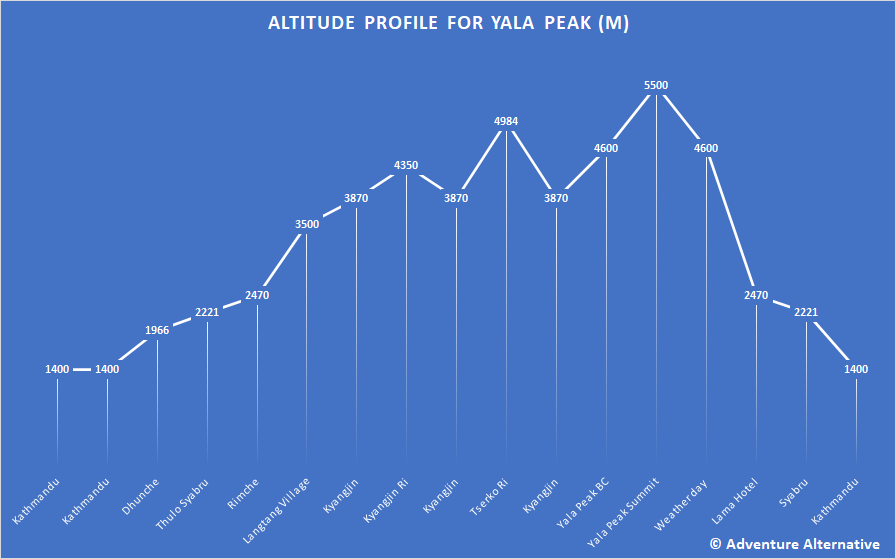
Accommodation on the Yala Peak Climb/Trek
Accommodation on the trek, before and after the climb of Yala Peak, is in comfortable lodges run by local families, unless people specify a preference for tents. Each lodge has a central communal area with stove, while the bedrooms are unheated with two beds and mattresses, blanket and pillows. You will need to bring a sleeping bag. The lodges generally have showers which are powered by gas and some use the infamous ‘drop’ toilets, though most now have flush systems now.
Food on the trek is very good quality, and a mixture of local Nepali food and western recipes. The local Dal Bhat or Momos are an excellent choice and burgers & chips are also a common meal. You will find everything from beer to batteries to Mars bars available in the lodges and local shops along the trail a Nepal price guide can be found here.
At Yala Peak base camp we will be in mountain tents usually sleeping two persons per tent. You should bring a 3 season sleeping bag and also a good quality sleeping mat. For lower down you may wish to use a sleeping bag liner to sleep in an open zipped 3 season bag, so that you don’t get too hot.
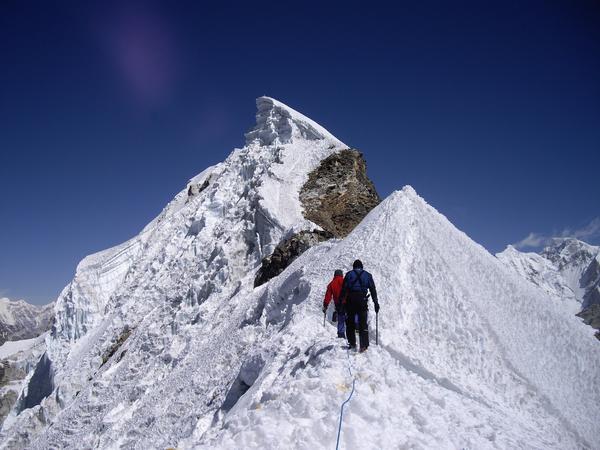
Experience Needed for Yala Peak
Yala Peak is an excellent starting point for Himalayan climbing without going about 6000m. It is also a good challenge for people who haven’t been to altitude before as the ascent is gradual. For the peak itself previous winter walking / mountaineering skills such as using a walking axe and crampons is a bonus, but is not essential as the guides will offer training whilst you’re trekking to the peak – you will have time to learn and practice the skills needed such as clipping into a rope and walking safely with the group.
Yala Peak Support Team
From your first enquiry and in the build up to your trip you’ll have direct access to experienced and professional guides and climbers for advice or to ask questions. Then, on arrival in Nepal, you’ll meet Tsering, our operations manager in Kathmandu who organises all the staff, equipment, permits and hotel arrangements. He is also the main link between you and the UK office when you are in Nepal.
Tsering will introduce you to your trek and climb guide at the briefing in Kathmandu and will also talk to the guide regularly whilst you are on the trek / climb when signal is available. He can also make arrangements while you are on the trek. You also have continued support from the main office in the UK. In the Khumbu region there is an opportunity to communicate since most lodges now have WiFi. We will always try our best to assist with any situation and of course we will provide you with all the advice and support you need prior to this trip. In addition:
- You will travel with our qualified, time proven, guides who not only lead trekking groups but are experienced in high altitude expeditions.
- Porters’ health and welfare is constantly monitored by local and UK trekking group leaders.
- All the staff in our UK office have been to Nepal and we are qualified mountain professionals so you can chat to people who understand what it’s like to go up for the first time, before you go.
- We provide insurance cover for all of our Sherpa guides and local staff in the event of an accident or need for repatriation.
- Preparation information and support is available to help you plan.
- We advise you to read our advice on altitude health and acclimatising safely.
The porters will carry your main bag up to a maximum weight of 15 kgs and cater for all the group needs, you will also have your guide and climbing guide with you throughout to ensure you are safe and happy.
You can speak directly with Gavin Bate about your proposed climb of Yala Peak and have the benefit of somebody who has climbed the mountain many times and who will go through the whole expedition from start to finish. In the office you will find friendly and knowledgeable staff who will give you the time to discuss through all your preferences and questions.
Our company is properly insured and financially protected, so that your money is safe and you know you are dealing with a tour operator that is correctly set up to manage and run trips like this.
Yala Peak Emergency and Evacuation
Incidents and accidents are very rare however they can happen and if a person is badly injured or an injury prevents them from walking then helicopter evacuations are the quickest and most common way of dealing with an emergency in Nepal. It is important to have travel insurance in place that covers you for helicopter evacuation if needed. In the event of an emergency the initial job of moving a casualty will be the responsibility of the team itself and the guide and porters. The task will be to move the casualty to the nearest safe place and then to a point where an evacuation can be made.
If the situation doesn’t require immediate evacuation then there are many local clinics for treatment and horses are commonly used for assisting transport if required. The horse owners usually charge around USD$150.00 per day which needs to be paid in cash.
In the case of altitude sickness the best advice is not to take risks and descend which will be fully facilitated by our team. There is plenty of literature on acclimatising safely on our site and our itinerary is designed to give you optimum and safe acclimatisation.
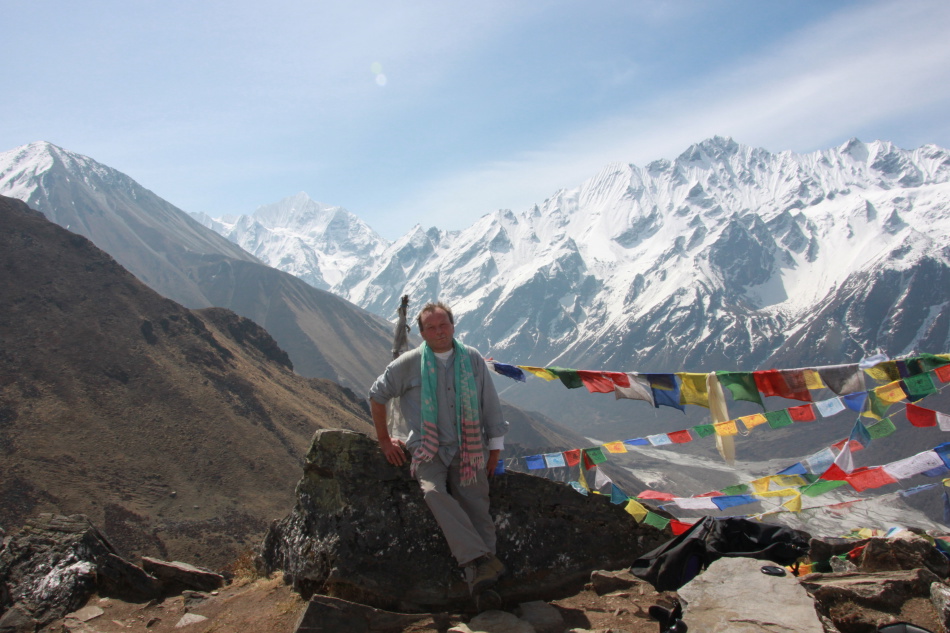
Yala Peak Kit List
- Large duffle bag or rucksack & liner
- 30 Ltr day pack
- Stuff sacks, waterproof, various sizes
- Expedition Jacket, primaloft or down
- Waterproof jacket and trousers, goretex or equivalent (softshell)
- Gaiters
- Trekking trousers and shorts, Tshirts, shirts
- Fleece or woollen tops
- Base layer tops and bottoms
- Thin socks and thick socks
- Warm hat, buff/balaclava, sunhat
- Liner gloves, warm gloves, mitts
- Sunglasses UV polaroid
- Mountaineering boots graded B1 or B2 to accommodate crampons
- Trekking boots and hut shoes
- 3 season sleeping bag (comfort temperature -10C) and compression sack
- Thermarest or thick foam sleeping mat for camping only
- Walking poles
- Head torch & spare batteries
- 2x 1 litre drinks bottles and covers
- Crampons
- Mountaineering harness
- Walking axe & leash
- Climbing slings 2 x 120cm
- Screwgate karabiners x 2
- Wash Kit and first aid, towel
We have a comprehensive list of gear for the trekking peaks of Nepal.
Items Available for Rent from Adventure Alternative (Pick Up in Nepal)
Mountaineering Harness
Karabiners and slings
Crampons
Walking Axe
Sleeping bag
Boots for the climb need to be of a type that will allow fitting of crampons. They also need to be warm and fitted well to your feet. For Yala Peak you will need boots graded at least B1 for crampon use. If you are planning on doing more mountaineering in the future on higher or colder routes it may be worth investing in B2 hybrid or B3 rigid Plastic boots both of which will also be suitable. Full 8000m triple boots are not needed for this climb but could be used if you already have them.
Frequently Asked Questions
Key Information & Guides
General Nepal Information
Health and Safety Guides
Preparation & Kit Guides
Book Your Adventure of a Lifetime Now
Discover our trips to other Countries
Other Trips You May Enjoy
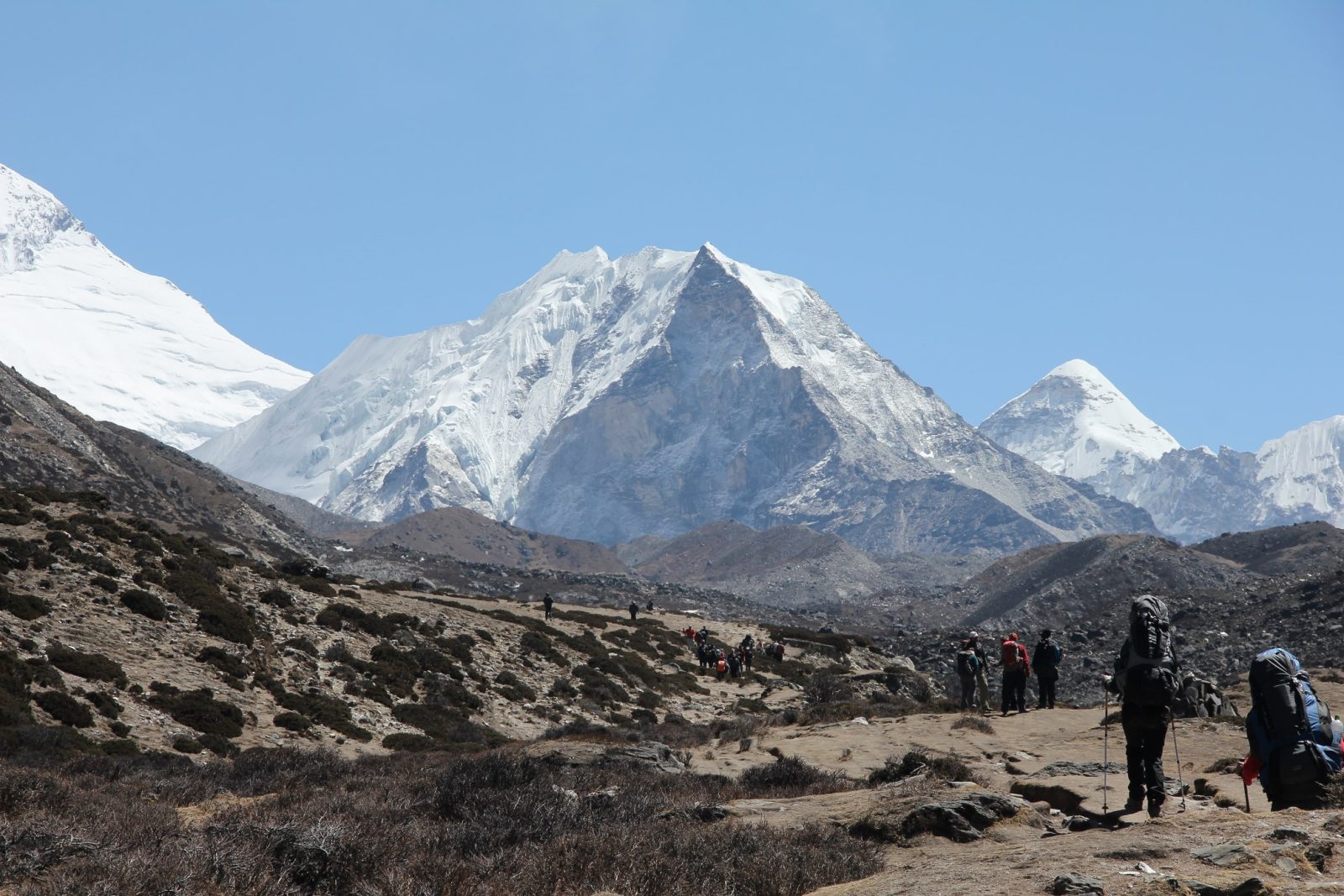
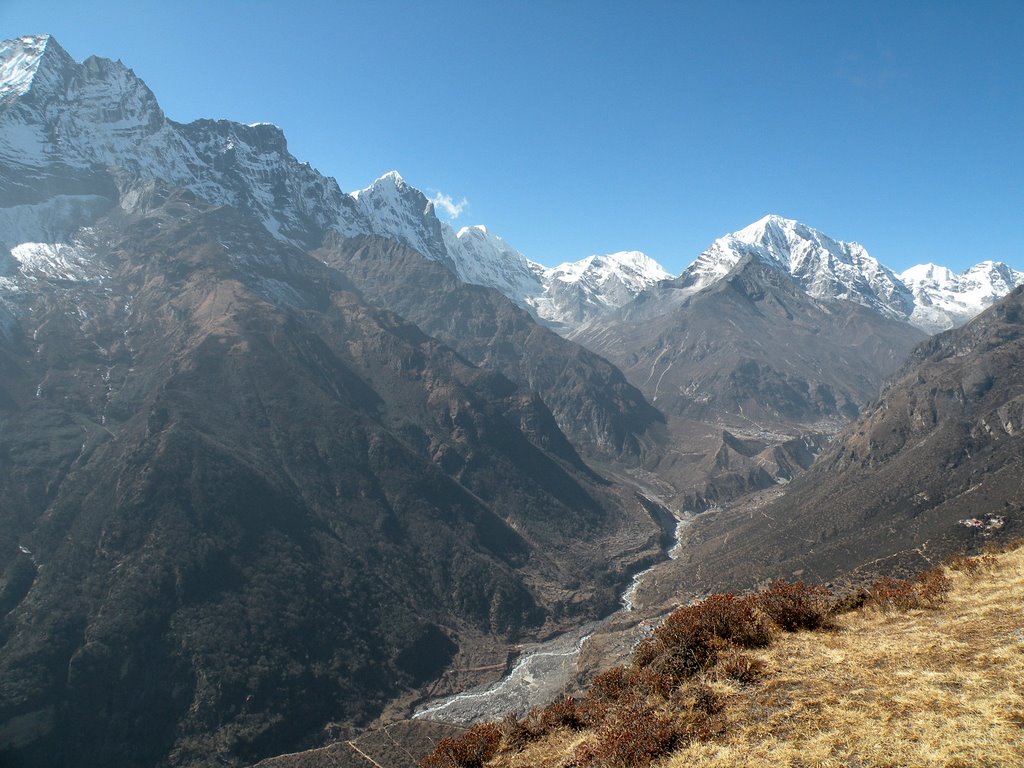
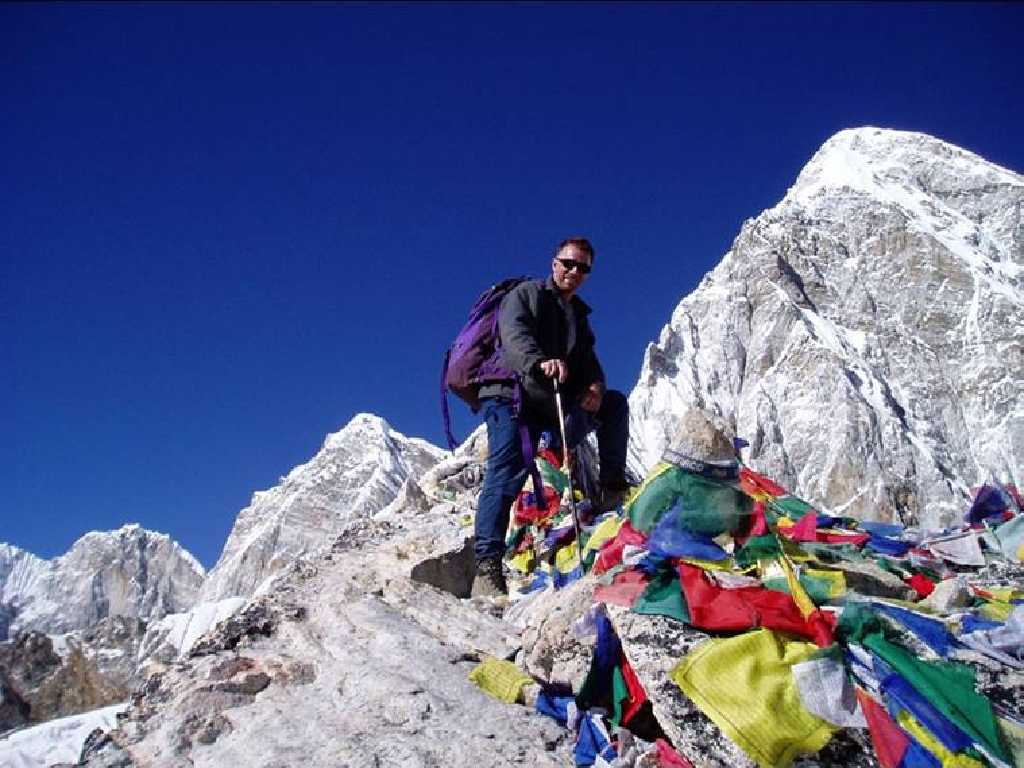
Our Nepal Posts
We’re dedicated to helping you make the most of your next adventure trekking holiday. That’s why we’ve created our travel blog full of in-depth trekking guides, travel inspiration and other fantastic information. Having done all of these climbs many times already, we want to pass on our wealth of trekking wisdom to you.
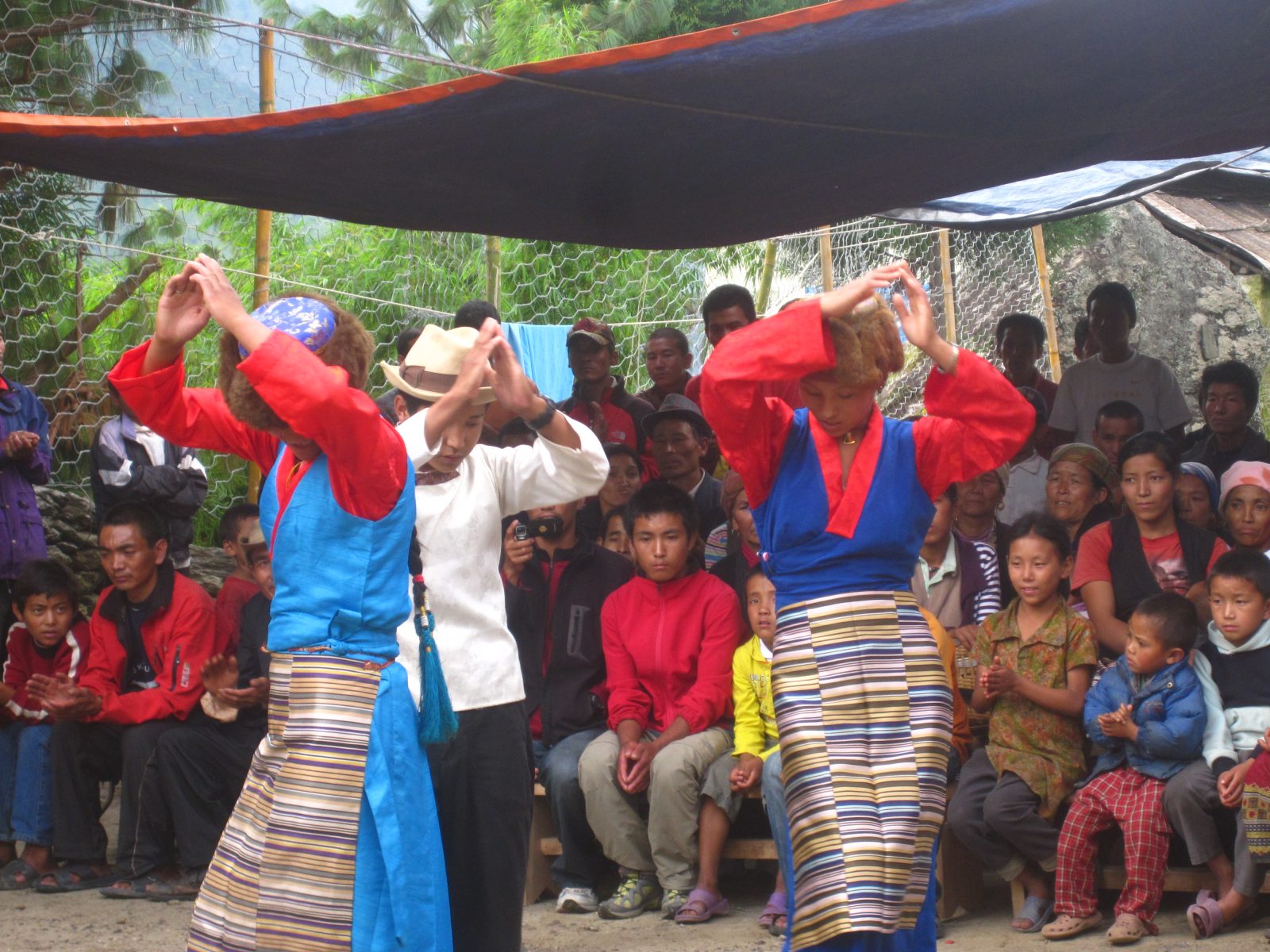
Happy New Year Nepal!
Although our calendar, the Gregorian calendar, is recognised in Nepal they also have others which are also used so it's currently the...
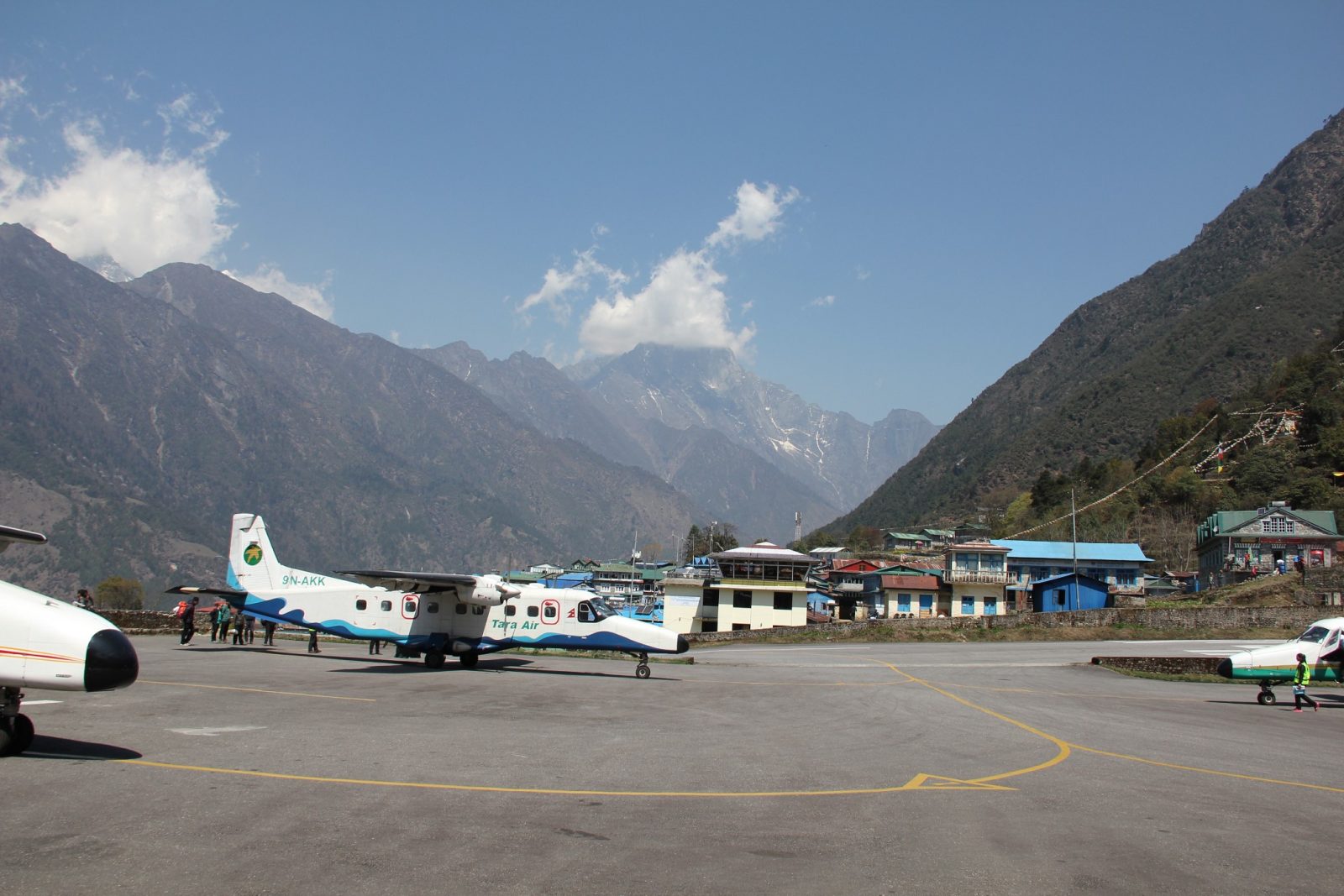
The Road to Everest
It used to be that the quickest way to get to Everest Base Camp was to fly into Lukla airport. Now all that is about to change with the building of...
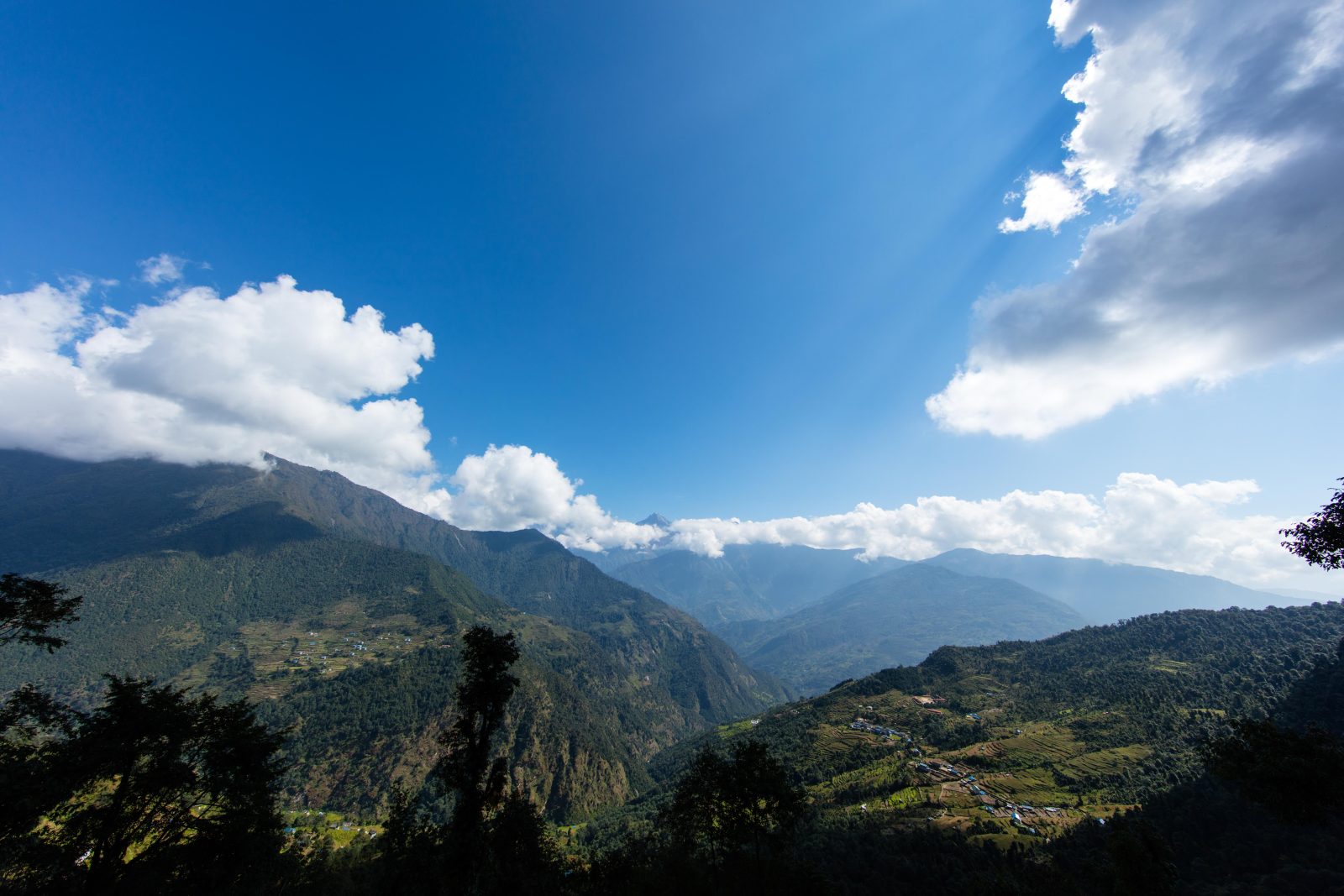
Trekking With Children in Nepal
There are no rules or laws that restrict children trekking in Nepal and it is the perfect place to combine stunning scenery with an incredible...
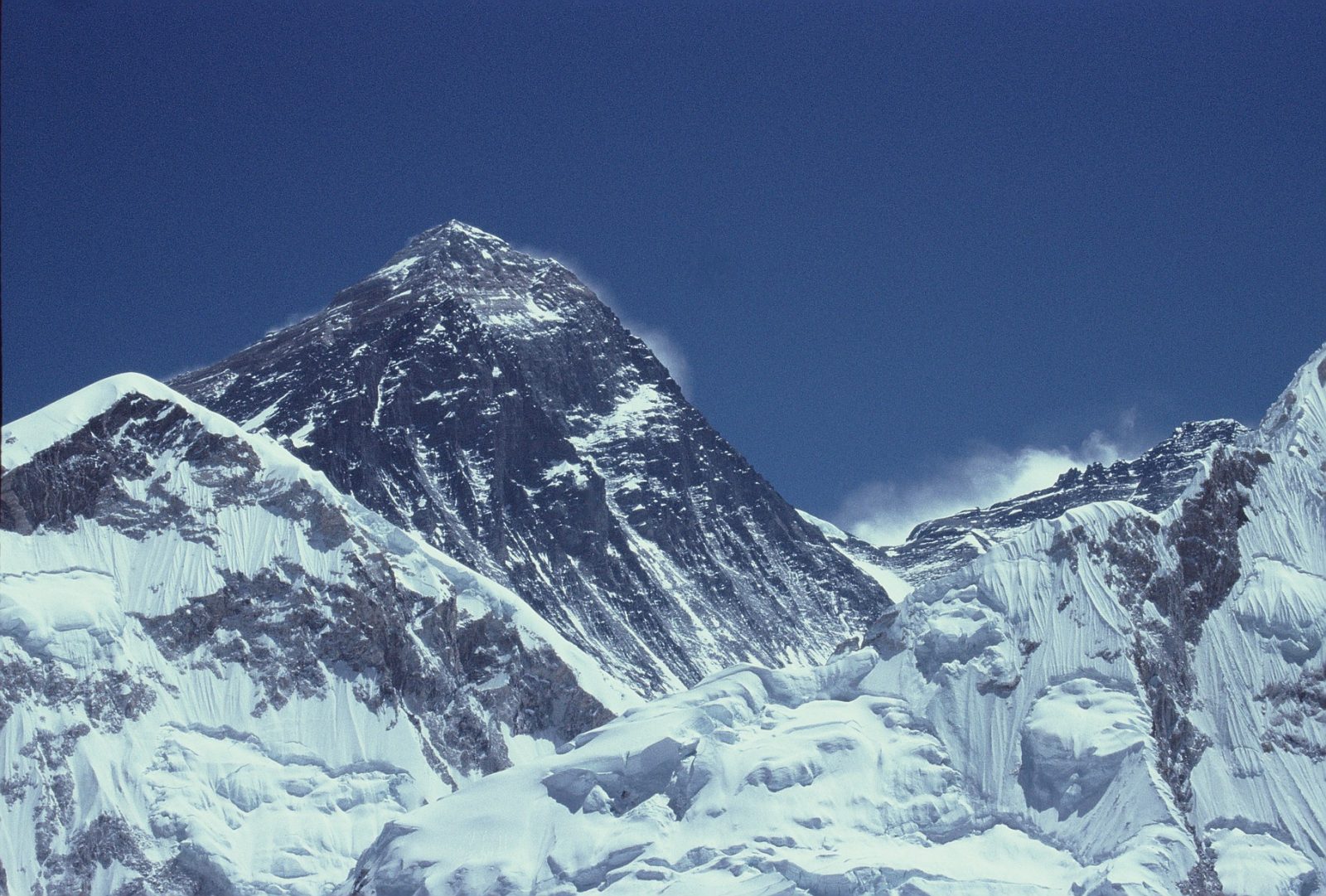
Faking Mount Everest?
An interesting story has come about towards the end of this years season on Mount Everest concerning the claim from an Indian climber that his...

How Hard is it to Trek to Everest Base camp?
A trek to Everest base camp is a very realistic opportunity for most people who enjoy the outdoors and have a good level of fitness and...
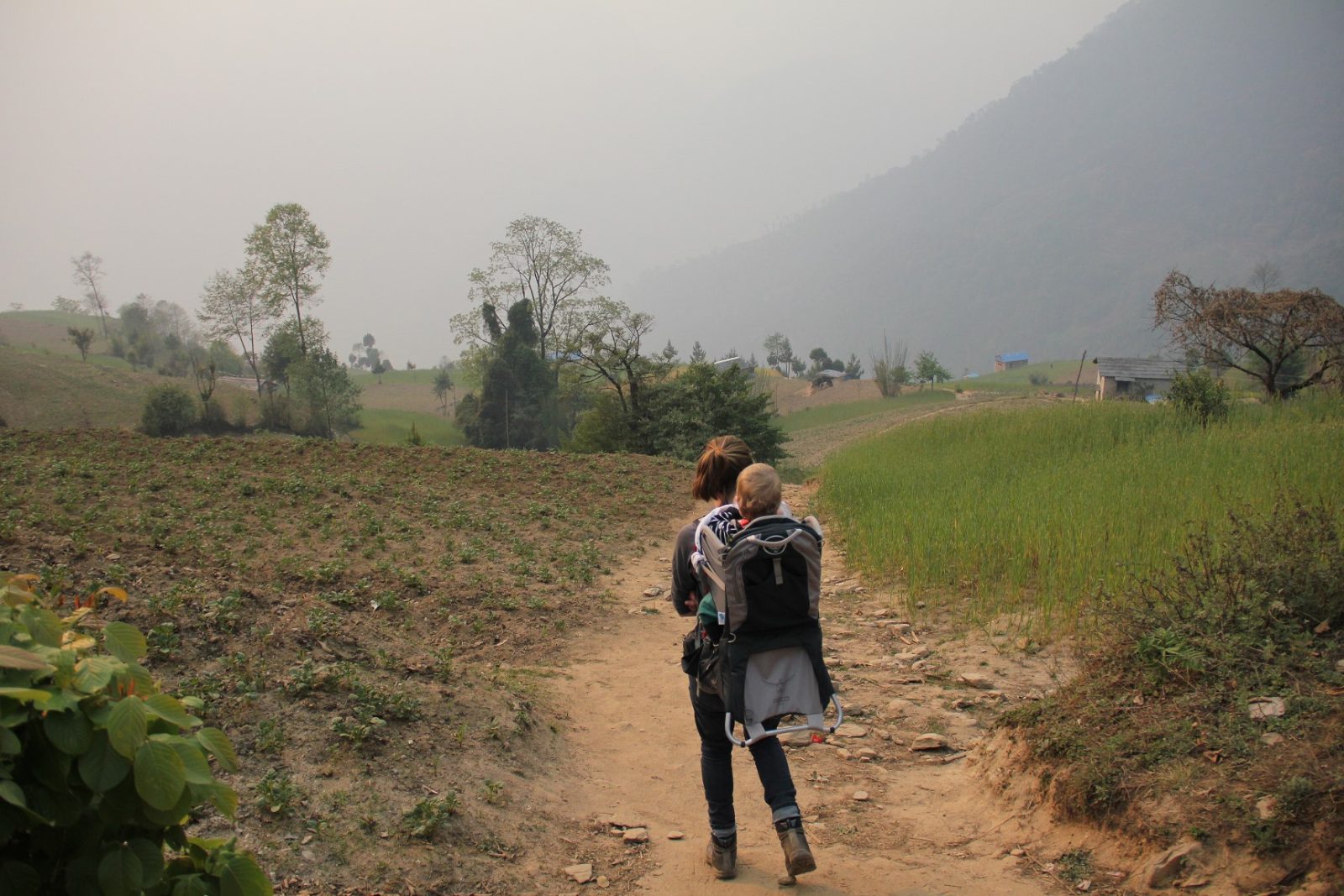
Trekking With Young Children in Nepal
I remember a friend saying he was looking forward to when his children were six or seven years old so that they could go travelling as a family to...

